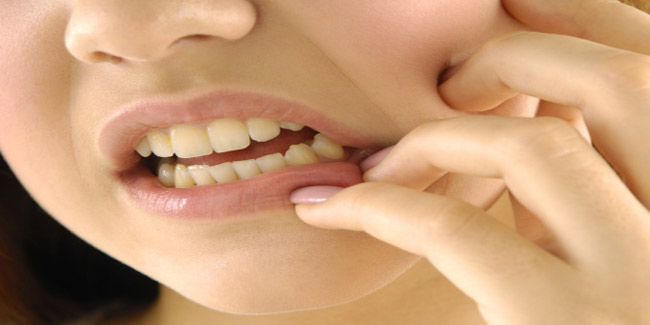
You teeth are meant to enhance your personality every time you smile. Your white teeth actually do it very well, however tooth discoloration can ruin your smile as well as lead to other oral health problems. Usually teeth become discolored by stains from food or drinks or by changes in the tooth material. 
There are three common types of tooth discoloration. First is extrinsic discoloration which occurs when enamel, the outer layer of the tooth, is stained by food or drinks such as coffee, wine and cola. Smoking is another leading cause of extrinsic stains.
Second type is intrinsic discoloration, which occurs when the inner structure of the tooth darkens or gets a yellow tint. Too much exposure to fluoride during early childhood, extensive use of tetracycline antibiotics when young, trauma or injury to the tooth, and a condition called dentinogenesis imperfect can cause intrinsic discoloration. It usually causes gray, amber or purple discolorations.
Lastly it is the third type of age-related discoloration which is usually a combination of extrinsic and intrinsic factors.
Table of Content:-
Common Symptoms
The common symptoms of tooth discoloration include stains on the enamel ranging from white streaks to yellow tints or brown spots and pits. You may also notice changes in the color of the enamel. The enamel may lose its whiteness and start appearing darker. In other cases dentin may appear more significantly making your tooth look yellowish.
Prevention
You can easily prevent tooth discoloration by making some simple lifestyle changes. If you are a coffee drinker and/or smoker, consider cutting back or quitting all together. Also, improve your dental hygiene by brushing and flossing regularly and getting your teeth cleaned by a dental hygienist every 6 months. If your teeth appear to be an abnormal color without ready explanation, the abnormal tooth color lasts despite following good oral hygiene practices, and if other symptoms are also present, makes an appointment to see your dentist.
Treatment
Treatment options to whiten teeth once they have started discoloring can vary a lot depending on the cause of the discoloration and the extent of discoloration. Common treatment options include proper oral care and hygiene including tooth brushing and flossing, avoiding foods and beverages that cause stains, and over-the-counter whitening agents.
How we keep this article up to date:
We work with experts and keep a close eye on the latest in health and wellness. Whenever there is a new research or helpful information, we update our articles with accurate and useful advice.
Current Version